Looking towards Friendship Square. The ball is supposedly supposed to resemble a soccer ball, and lights up in LED animations at night.
While I was in Changchun, I took a 48-hour side trip to the Manchurian city of Dalian (大连), traveling there and back by train. In Dalian, I had the opportunity to see the city, which contrasted greatly with Changchun in almost every possible way. The more restrained parts of the city, surrounding the city centre, felt similar to that of a North American west coast city, but the new booming waterfront felt a bit like Dubai.
A friend of a friend met me at the train station (more about my trip below the fold) and then we drove out to the Yellow Sea coastline. Immediately, I felt like I was in an eastern Vancouver, (with those bits of European monumentalism and San Francisco thrown in). There’s many tunnels under mountains connecting parts of the city together. Behind the older city, along the water, are several impressive parks, including a ‘magnetic hill’. The city is a financial centre, and the national offices of many Japanese and Korean firms, and there was little little of the visible poverty that you see in Changchun. Many buildings from the Russian and Japanese eras remain.
Dalian has a very attractive downtown, and indeed, is one of the few cities in China to have an easily identifiable city centre. However, I have been told that the downtown office towers, while impressive, are half-empty, but yet they build more.
The bank headquarters are on all corners of Zhongshan Square, in the city’s financial district, with new towers set behind Russian and Japanese-era low-rise structures. It’s a good example of heritage preservation in a country with a spotty record of it in its fast-changing urban centres.
Nearby the financial centre are the shopping and administrative centres. The shopping centre, near the railway station, is rather compact, and has a large underground shopping area much like the PATH. There are several pedestrian streets in the shopping area, and a smaller, manicured public square (People’s Square) tucked in with the administrative buildings.
People’s Square
Distant from downtown, the city is in the midst of a new development of the Yellow Sea waterfront, the centrepiece being Xinghai Square, claimed to be the largest public plaza in the world. Xinghai Square itself is huge, but empty. The square is nicely landscaped, but feels like a Dubai-esque symbol of spectacle and civic ambition. While it was a Wednesday around noon time, there was nearly nobody in the square, apart from a respectable amount of human activity on the water’s edge. Just off the square are dozens of post-modern towers that could fit in parts of North York or Mississauga Centre, and faux-historic retail buildings. But the defining landmark is a full-sized Bavarian-style castle, supposedly built only to improve the district’s feng shui (according to Thomas Campanella in the 2008 book The Concrete Dragon) – inside, there is only a small seashell museum.
Faux historic shopping street
Xinghai Castle
Dalian has one trolleybus route left, as well as a small tram system that operates partly in city streets and partly in a private right-of-way. The route in the outer seacoast area feels like the 509 car here in Toronto. The city has modern Talents (built in Changchun) but also have a few Japanese-era Witt-type cars. The wooden interior of these original trams are lovely, with historical pictures where one might expect ads. I was told that they are intentionally preserved as a memorial of the past. I found this slightly surprising, as they come from the Japanese-occupation/Manchuko era, but I appreciated the effort undertaken to preserve the old trams. Only in Hong Kong have old trams also been preserved at this scale in China, and only three cities (including Changchun) have preserved any of their street railways. Again, it makes me wish Toronto kept the PCC streetcars, at least in semi-regular service.
There is also an elevated metro-like light-rail line to the “Development Zone”, a office complex where the shipyards were. I didn’t ride that though.
Riding China Railways is an experience, and even though this is still a developing country, rail transport here puts anything in the Western Hemisphere to shame. Trains are frequent and efficient, nearly all mainline track is electrified, and nearly free from level road crossings. The Changchun Station, where I departed from, is a concrete and steel monolith and outside looks somewhat oppressive. Inside, I felt that I was taken back to the days of Mao with huge separate high-ceilinged waiting rooms, faux-marble floors and spartan decor. Interestingly, all rail stations have basic security – you pass through a metal detector and bags go into an x-ray. Only ticketed passengers allowed in the station itself. I guess it wouldn’t be too hard to do here if necessary at main VIA stations, but then again, this isn’t Greyhound or one of VIA’s trains that make remote stops.
While I had a comfortable sleep in “soft sleeper” class (closed cabins of four beds), the train I took back was packed and slightly uncomfortable. I ended up with a “hard seat:” seats facing each other, like a GO Train, but 6 on one side, 4 on the other. Slightly more legroom than GO. Seats do not recline. (Apparently “soft seat” are nicer seats in a 4×4 quad arrangement, with slightly more leg room but no recline either.) I saw some smaller cities on the way back, such as Anshan, a rather dirty steel-making city which looked ugly passing through it on the train. There were some beautiful mountains at the beginning, near Dalian, but later, coal mines and hills and mounts stripped away, like what I heard about in West Virginia. The poverty of the countryside is immediately apparent, and so very different from even industrial cities like Changchun.

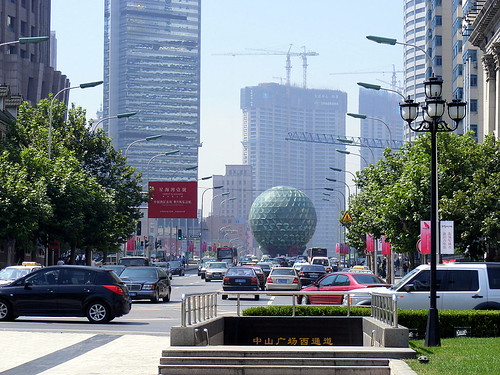
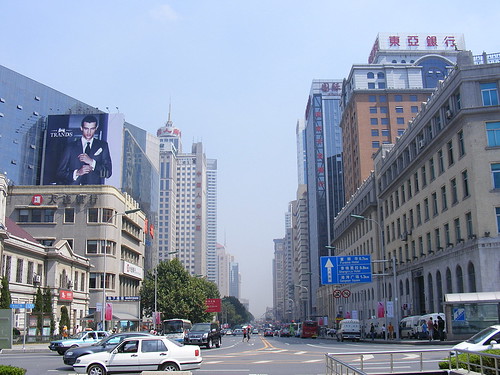
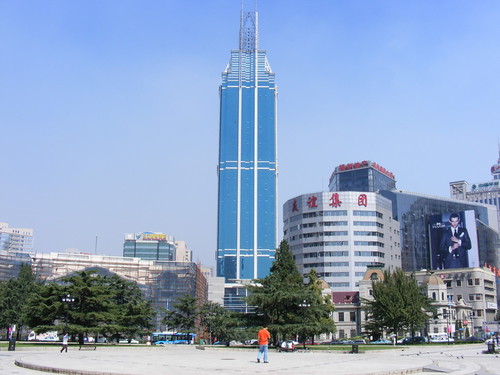


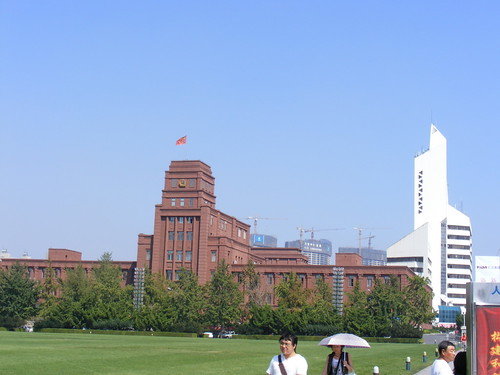
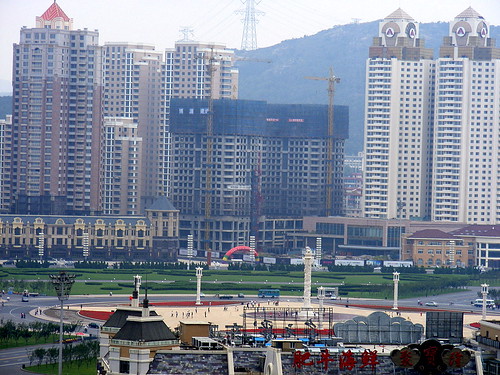
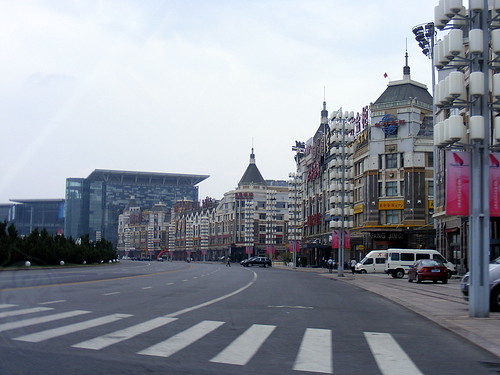
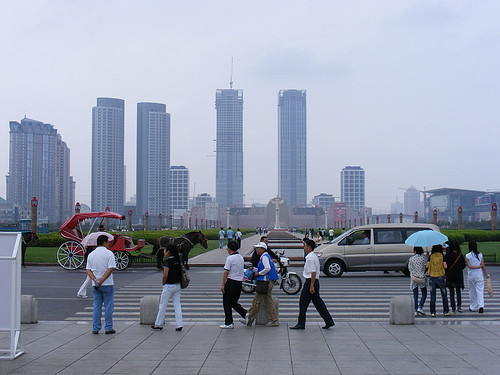
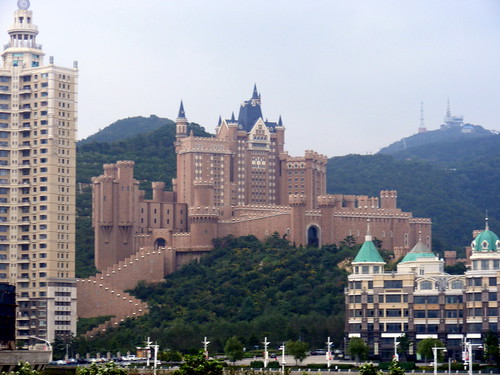
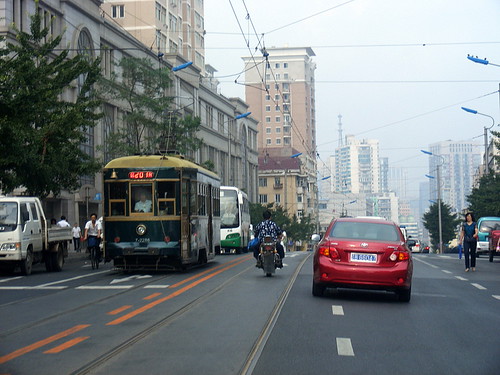


6 comments
The Chinese real estate bubble is going to make the US one pale by comparison.
“I have been told that the downtown office towers, while impressive, are half-empty, but yet they build more.”
There is much of this in China. I visited many people’s houses in the southern parts, Fujian, and found that many had completely empty floors. Their houses would be four to five floors with about 10 large sized rooms per floor.
Another city, know for its people becoming rich making pharmaceuticals, looked like a ghost town. It had huge houses that had massive tinted windows that were shades of green and blue. They would sit empty until Chinese new year. They are supposed to be a sign of the wealth that they posses.
I was in Dalian this summer. I thoroughly enjoyed this article.
Thanks Spacing.
I expected Beijing to be all slick and modern looking, but for some reason I had constructed in my mind an image of every other Chinese cities as squalid and third-world.
Thanks for these articles. They’re awesome.
That castle is really freaky.
It’s remarkable to think that, as well as a few huge cities we’ve heard of, China is full of cities of Toronto’s scale, each in the process of developing their own character. It puts Toronto’s issues in perspective.
I have visited Dalian several times over the past 20 years and enjoyed the article very much. When I was first there, 1989, there was NO highrise and, from what I remember, the old Japanese-era tram line was a bit longer. The City used to have a great fresh fish market right downtown but I did not notice it on my last trip.